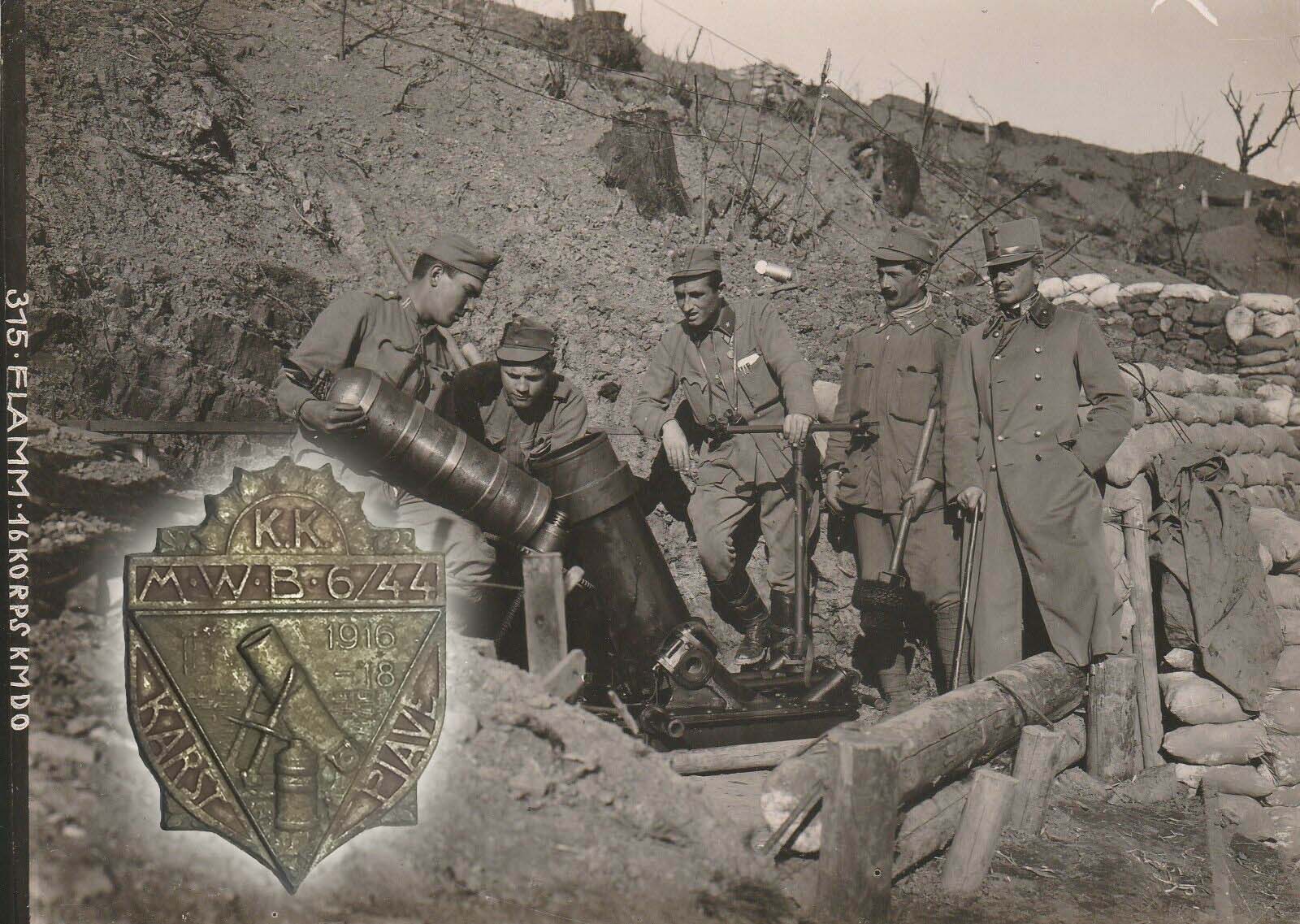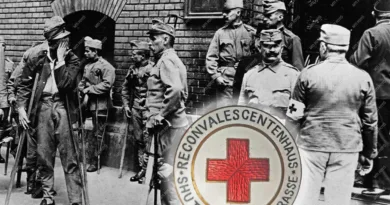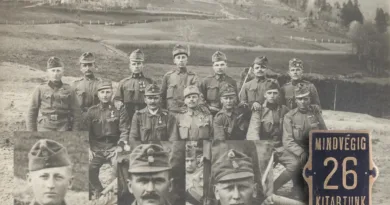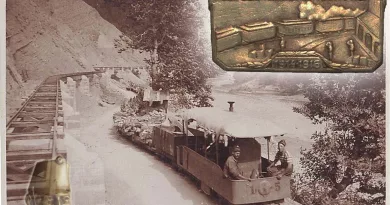Trench mortars
The 22cm heavy trench mortar was already shown here before. The image in this post is another nice shot that shows not only the gun but also the operators and the charging process. The projectile is inserted just after Operator 4 cleaned the cannon tube with the wire brush after the previous firing. The work is observed by an inspecting lieutenant colonel.
The Monarchy employed mine throwers in all battlefields. Still, perhaps the most on the Italian front. This weapon fires the projectile on a steep trajectory, so it is also suitable for hitting targets in narrow valleys or under cover. Of course, field howitzers were suitable for the same. The mortar however was a much cheaper, easier-to-use artillery device compared to the howitzer. It was also easier to get it to the front line. Of course, this was also necessary, as their range was only a few thousand meters. This is why it was used in hilly and mountainous countryside. In such a proximity, the black gunpowder smoke generated during the firing immediately betrayed the location of the tube. It could be attacked immediately. Therefore, the personnel tried to hide the device from enemy observers.

In the photo, we see a 22cm heavy trench mortar hidden behind such a high point, somewhere on the Isonzo front. Since the XVI. corps was stationed here between May 1915 and November 1917, the picture was certainly taken here. Although the badge used for the post belonged to a battery of another corps, the script of the badge indicates the Italian front. It depicts the same type of weapon as the photo.




